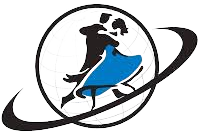What causes Divarication of Recti?
Diastasis recti is a condition where the ab muscles separate due to extreme pressure in the abdominal wall. Pregnancy and repeated heavy lifting are common causes of diastasis recti. Diastasis recti will usually heal on its own but core exercises and physical therapy can help.
What are Tendinous intersections?
Anatomical terminology. The rectus abdominis muscle is crossed by three fibrous bands called the tendinous intersections or tendinous inscriptions. One is usually situated at the level of the umbilicus, one at the extremity of the xiphoid process, and the third about midway between the two.
What are the 3 muscle layers of the stomach?
Layers of Stomach Wall The three layers of smooth muscle consist of the outer longitudinal, the middle circular, and the inner oblique muscles. Construction of these muscles helps mix and break the contents into a suspension of nutrients called chyme and propels it into the duodenum.
Where is the abdomen wall?
The abdominal wall is defined cranially by the xiphoid process of the sternum and the costal margins and caudally by the iliac and pubic bones of the pelvis. It extends to the lumbar spine, which joins the thorax and pelvis and is a point of attachment for some abdominal wall structures [1].
Is Divarication of Recti normal?
Diastasis recti is extremely common in those who are pregnant and during the postpartum period. It affects 60% of people. It usually resolves itself within eight weeks of delivery. About 40% of those who have diastasis recti still have it by six months postpartum.
Is Divarication of Recti a hernia?
A diastasis is the thinning and weakening of the connective tissue (linea alba) that connects the left and right sides of the rectus abdominis muscle (6-pack muscle). A hernia is the protrusion of an organ or piece of tissue from its normally contained space.
What are abdominal muscles called?
Your core muscles are the muscles deep within the abdominals and back, attaching to the spine or pelvis. Some of these muscles include the transversus abdominis, the muscles of the pelvic floor, and the oblique muscles. Another muscle that is involved in moving the trunk is the multifidus.
What is the abdomen?
The area of the body that contains the pancreas, stomach, intestines, liver, gallbladder, and other organs.
What is Pyramidalis muscle?
Pyramidalis is a small triangular muscle located anterior to the lower part of rectus abdominis muscle within the rectus sheath. It is attached by tendinous fibres to anterosuperior margin of pubis and by the ligamentous fibres in front of the pubic symphysis.
¿Dónde se encuentra el recto del abdomen?
El recto del abdomen es el principal músculo vertical de la pared abdominal anterior. Este músculo se origina en la sínfisis y la cresta del pubis, y llega a insertarse a la apófisis xifoides y del quinto al séptimo cartílago costal.
¿Qué es el músculo recto abdominal?
Músculo recto abdominal. El músculo recto del abdomen o músculo recto abdominal ( [ TA ]: musculus rectus abdominis) forma parte de la pared abdominal y se encuentra por fuera de la línea media del abdomen de los seres humanos y de otros animales. Es un músculo par, largo y aplanado, interrumpido por tres o cuatro intersecciones aponeuróticas o
¿Qué es el recto y cuáles son sus características?
Es decir, que ocupa la mayor parte de la pared del abdomen, y que tiene como característica que los rectos poseen en el medio una línea de color blanca que esta diseñada de tejido tendinoso para mantener unidas a todas las fibras musculares.
¿Qué es la diástasis de rectos abdominales?
La diástasis de rectos abdominales, diástasis de rectos o diástasis abdominal es la separación de los músculos rectos del abdomen. Es una de las condiciones anatómicas que puede llevar a la proyección anterior de la pared abdominal.
